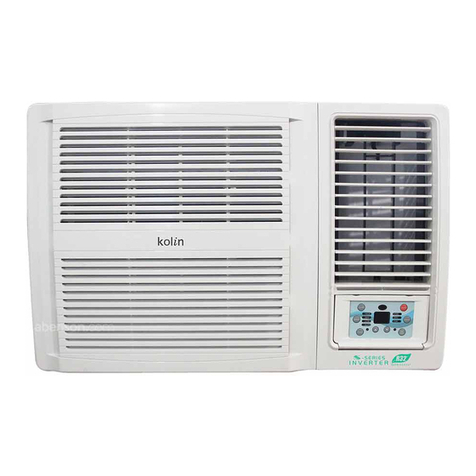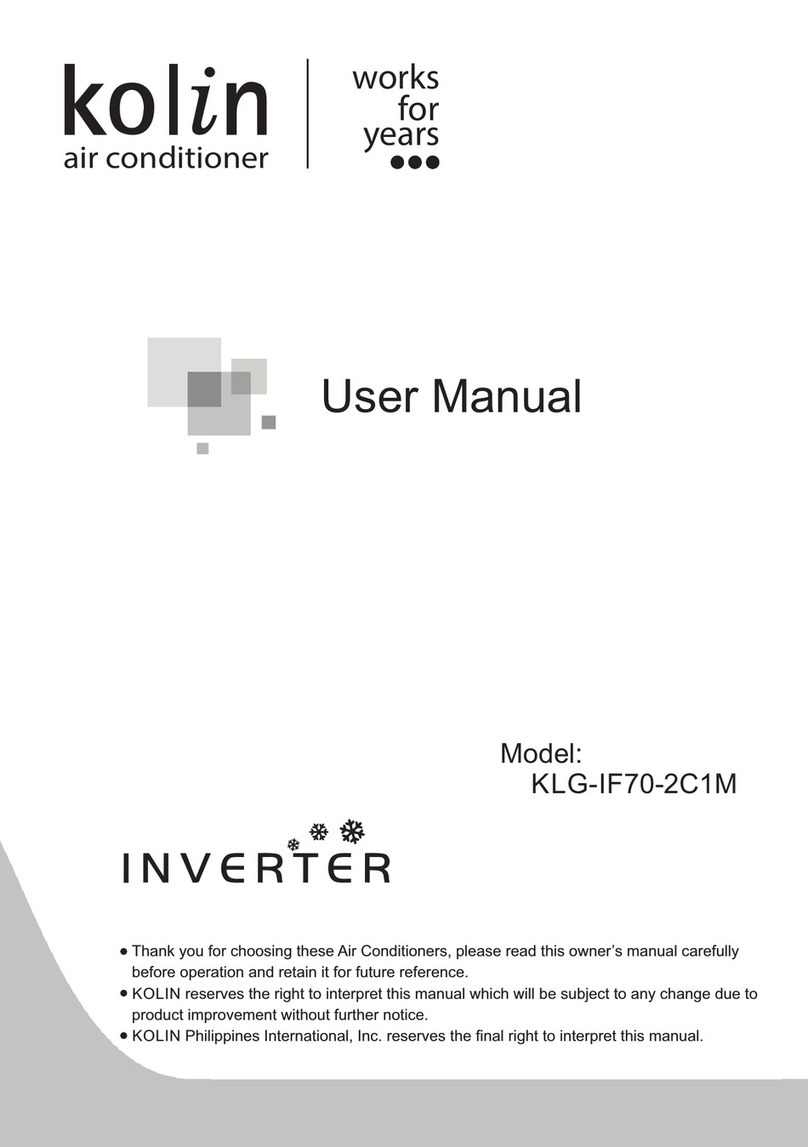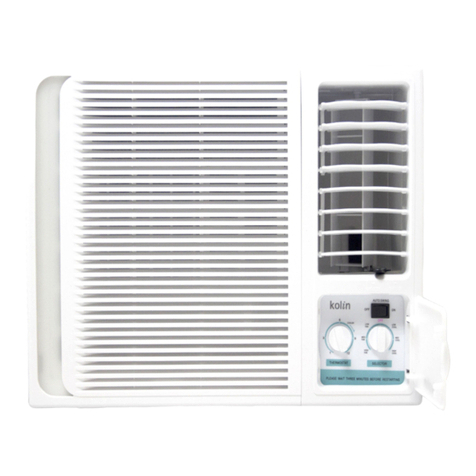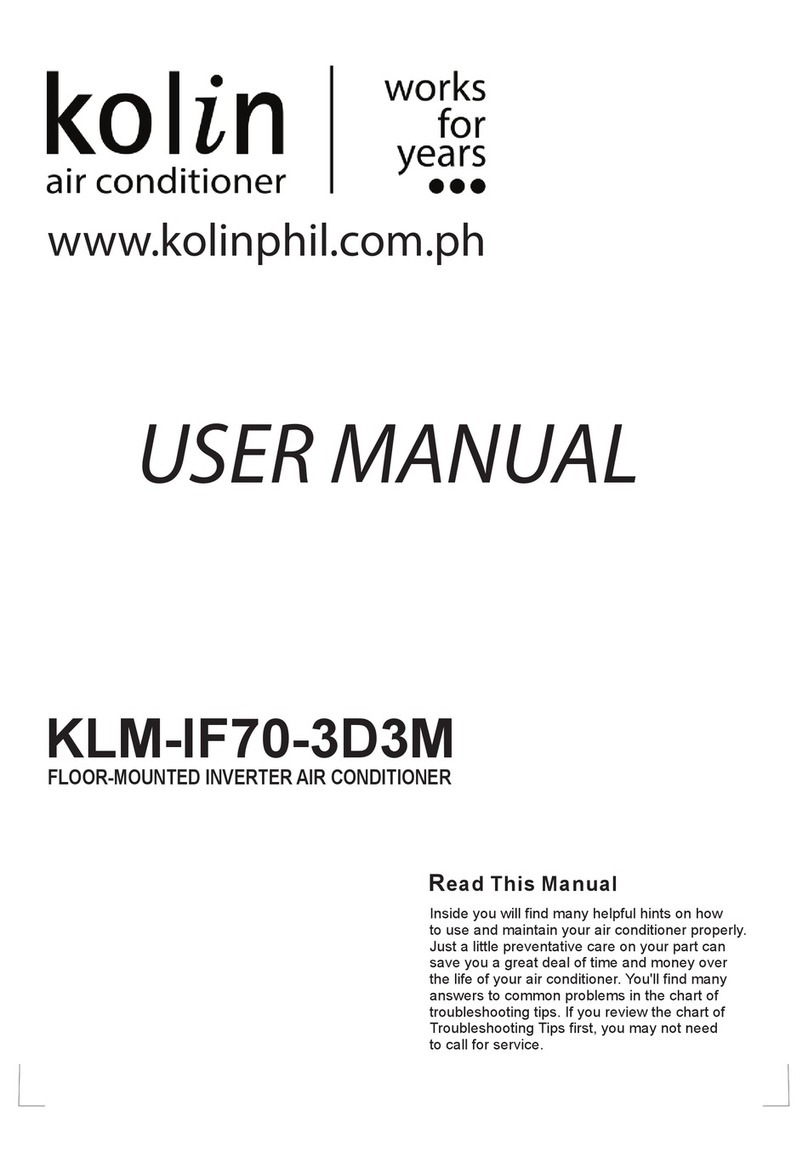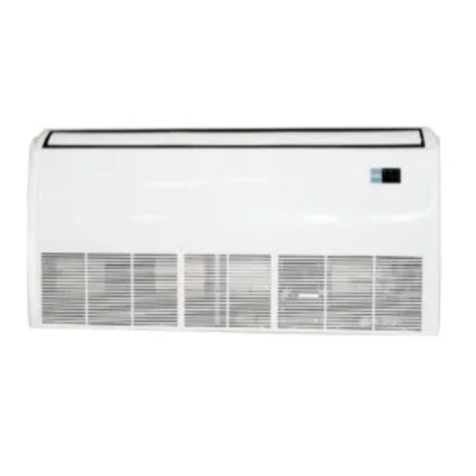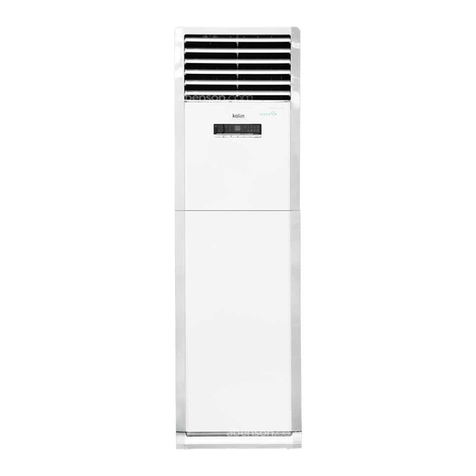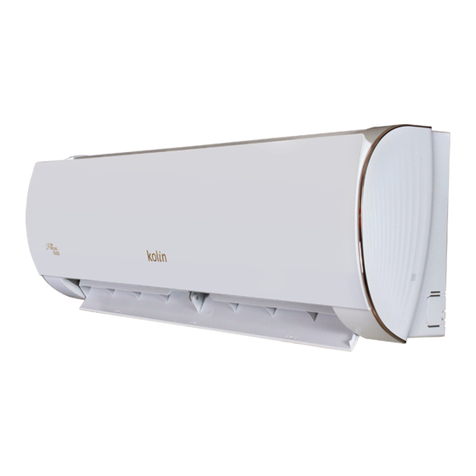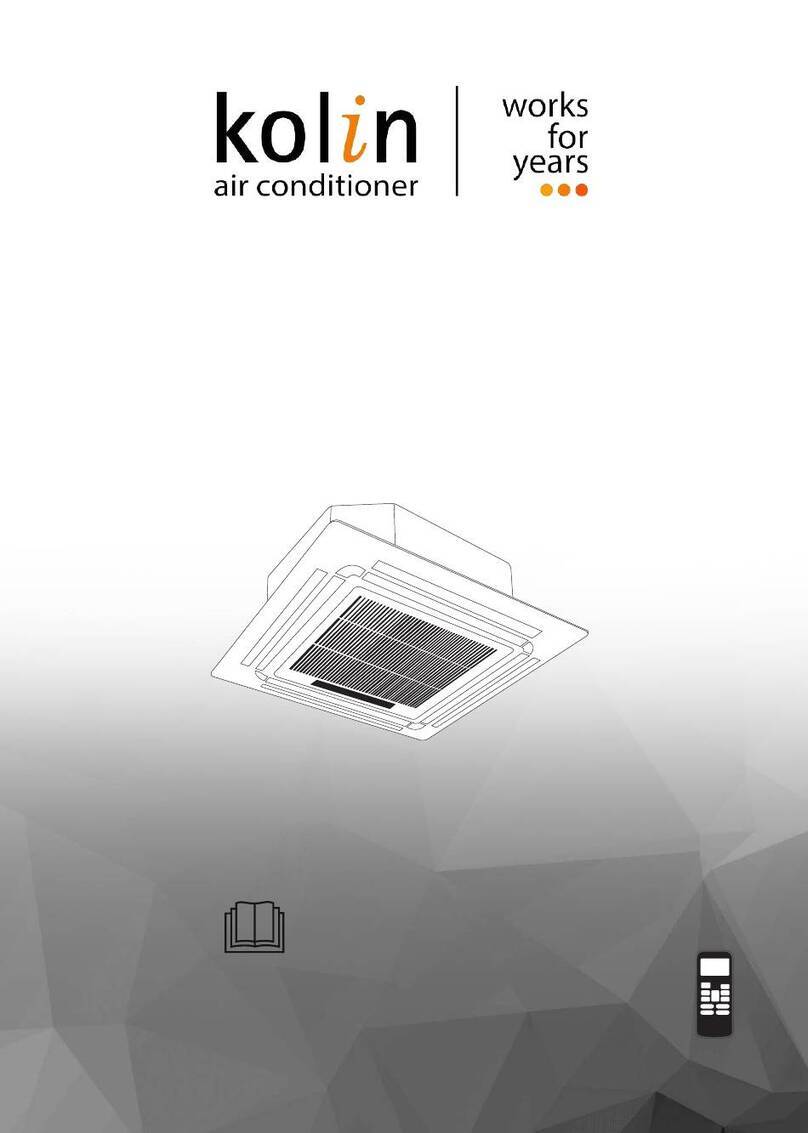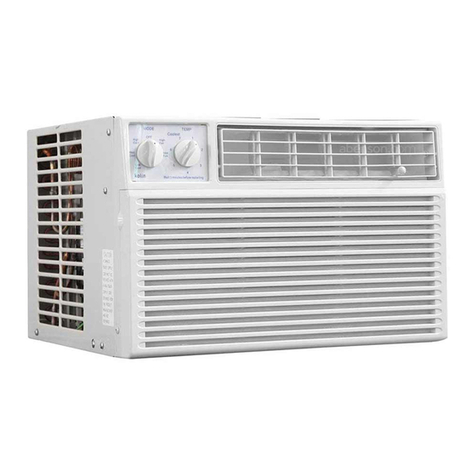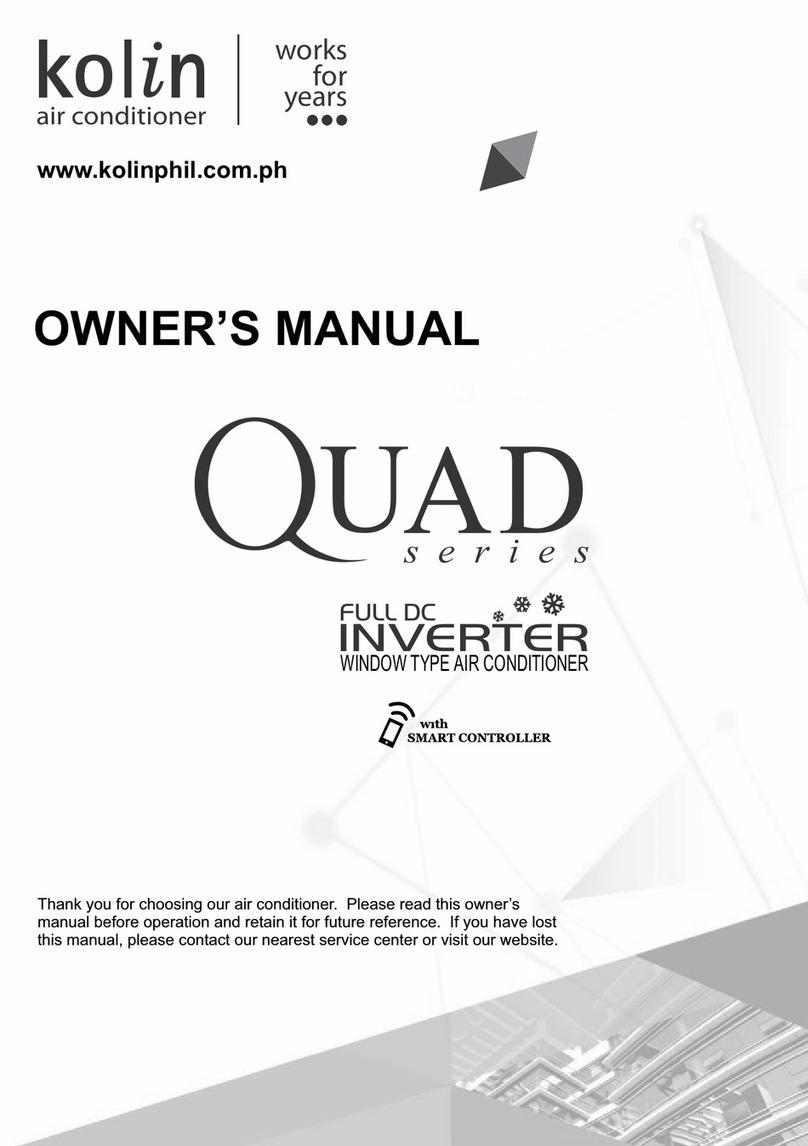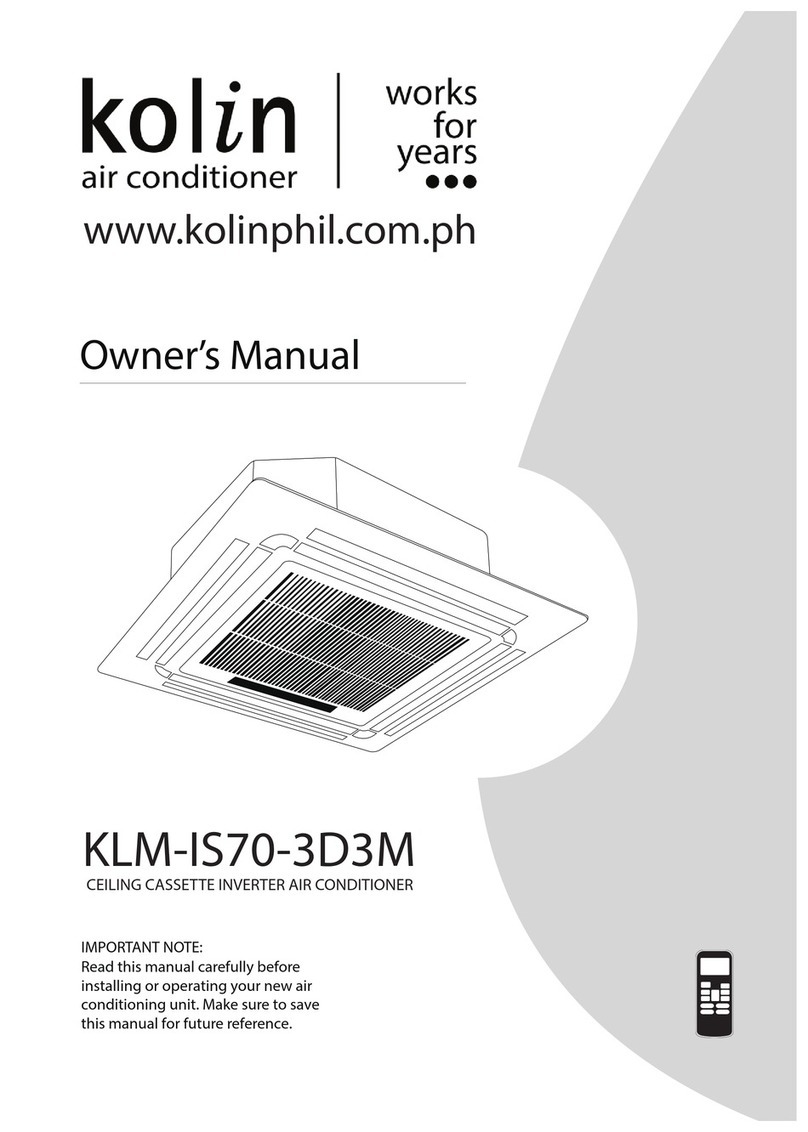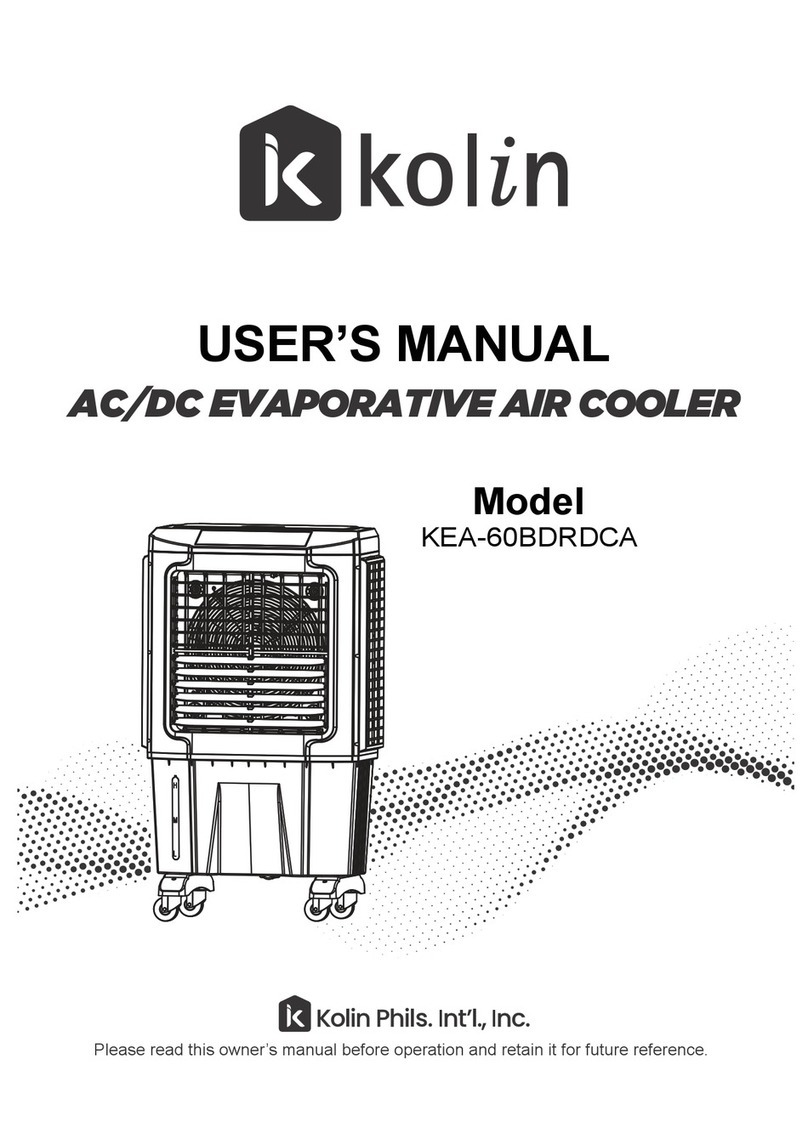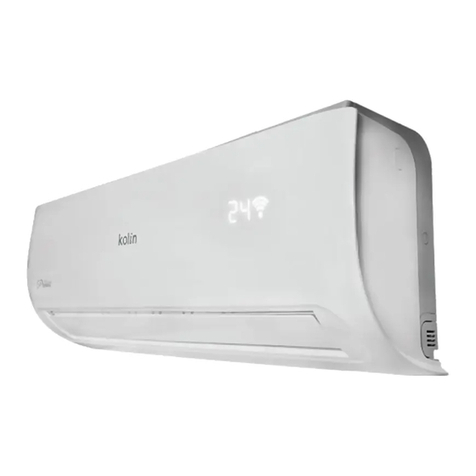
ePage 10f
Important Safety
Instructions
WARNINGS (for using R290/R32 refrigerant only)
2)Work procedure
Work shall be undertaken under a controlled procedure so as to minimise the risk of a
ammable gas or vapour being present while the work is being performed.
3)General work area
All maintenance sta and others working in the local area shall be instructed on the nature
of work being carried out. Work in conned spaces shall be avoided. The area around the
workspace shall be sectioned o. Ensure that the conditions within the area have been made
safe by control of ammable material.
4)Checking for presence of refrigerant
The area shall be checked with an appropriate refrigerant detector prior to and during work,
to ensure the technician is aware of potentially ammable atmospheres. Ensure that the leak
detection equipment being used is suitable for use with ammable refrigerants, i.e.
non-sparking, adequately sealed or intrinsically safe.
5)Presence of re extinguisher
If any hot work is to be conducted on the refrigeration equipment or any associated parts,
appropriate re extinguishing equipment shall be available to hand. Have a dry powder or
CO2 re extinguisher adjacent to the charging area.
6)No ignition sources
No person carrying out work in relation to a refrigeration system which involves exposing
any pipe work that contains or has contained ammable refrigerant shall use any sources
of ignition in such a manner that it may lead to the risk of re or explosion. All possible
ignition sources, including cigarette smoking, should be kept suciently far away from the
site of installation, repairing, removing and disposal, during which ammable refrigerant
can possibly be released to the surrounding space. Prior to work taking place, the area
around the equipment is to be surveyed to make sure that there are no ammable hazards
or ignition risks. No Smoking signs shall be displayed.
7)ventilated area
Ensure that the area is in the open or that it is adequately ventilated before breaking into the
system or conducting any hot work. A degree of ventilation shall continue during the period
that the work is carried out. The ventilation should safely disperse any released refrigerant
and preferably expel it externally into the atmosphere.
8)Checks to the refrigeration equipment
Where electrical components are being changed, they shall be t for the purpose and to the
correct specication. At all times the manufacturer's maintenance and service guidelines
shall be followed. If in doubt consult the manufacturer's technical department for assistance.
The following checks shall be applied to installations using ammable refrigerants:
The charge size is in accordance with the room size within which the refrigerant containing
parts are installed;
The ventilation machinery and outlets are operating adequately and are not obstructed;
If an indirect refrigerating circuit is being used, the secondary circuit shall be checked for
the presence of refrigerant;
Marking to the equipment continues to be visible and legible. Markings and signs that are
illegible shall be corrected;
